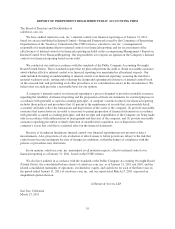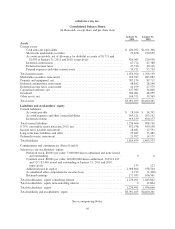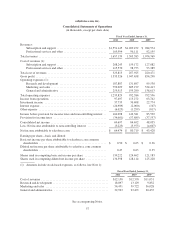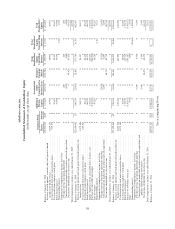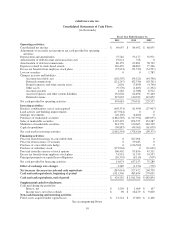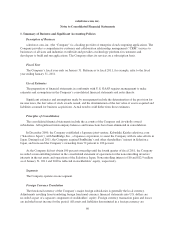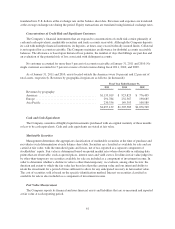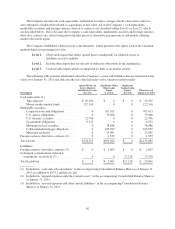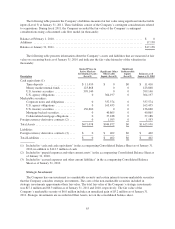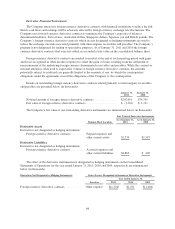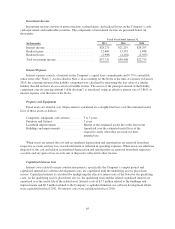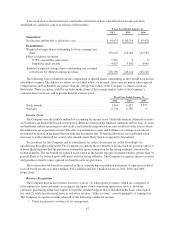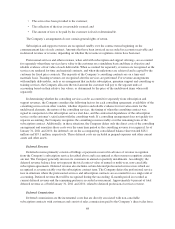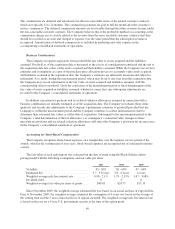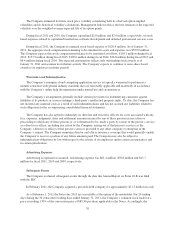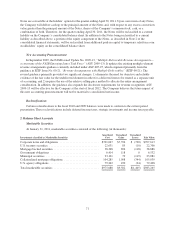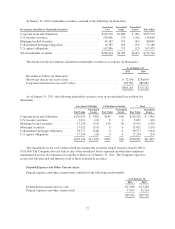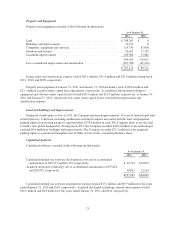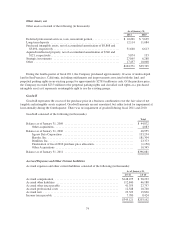Salesforce.com 2011 Annual Report Download - page 72
Download and view the complete annual report
Please find page 72 of the 2011 Salesforce.com annual report below. You can navigate through the pages in the report by either clicking on the pages listed below, or by using the keyword search tool below to find specific information within the annual report.
Derivative Financial Instruments
The Company enters into foreign currency derivative contracts with financial institutions to reduce the risk
that its cash flows and earnings will be adversely affected by foreign currency exchange rate fluctuations. The
Company uses forward currency derivative contracts to minimize the Company’s exposure of balances
denominated in Euros, Swiss francs, Australian dollars, Singapore dollars, Japanese yen and British pounds. The
Company’s foreign currency derivative contracts which are not designated as hedging instruments are used to
reduce the exchange rate risk associated primarily with intercompany receivables and payables. The Company’s
program is not designated for trading or speculative purposes. As of January 31, 2011 and 2010 the foreign
currency derivative contracts that were not settled are recorded at fair value on the consolidated balance sheet.
Foreign currency derivative contracts are marked-to-market at the end of each reporting period with gains
and losses recognized as other income (expense) to offset the gains or losses resulting from the settlement or
remeasurement of the underlying foreign currency denominated receivables and payables. While the contract or
notional amount is often used to express the volume of foreign currency derivative contracts, the amounts
potentially subject to credit risk are generally limited to the amounts, if any, by which the counterparties’
obligations under the agreements exceed the obligations of the Company to the counterparties.
Details on outstanding foreign currency derivative contracts related primarily to intercompany receivables
and payables are presented below (in thousands):
January 31,
2011
January 31,
2010
Notional amount of foreign currency derivative contracts ............... $202,491 $74,705
Fair value of foreign currency derivative contracts .................... $ (1,324) $ 1,191
The Company’s fair value of our outstanding derivative instruments are summarized below (in thousands):
Fair Value of Derivative Instruments
Balance Sheet Location
As of January 31,
2011
As of January 31,
2010
Derivative Assets
Derivatives not designated as hedging instruments:
Foreign currency derivative contracts ........ Prepaid expenses and
other current assets $1,539 $1,593
Derivative Liabilities
Derivatives not designated as hedging instruments:
Foreign currency derivative contracts ........ Accrued expenses and
other current liabilities $2,863 $ 402
The effect of the derivative instruments not designated as hedging instruments on the Consolidated
Statements of Operations for the year ended January 31, 2011, 2010 and 2009, respectively are summarized
below (in thousands):
Derivatives Not Designated as Hedging Instruments Gains (Losses) Recognized in Income on Derivative Instruments
Year ended January 31,
Location 2011 2010 2009
Foreign currency derivative contracts ........... Other expense $(1,324) $1,191 $(1,004)
64



